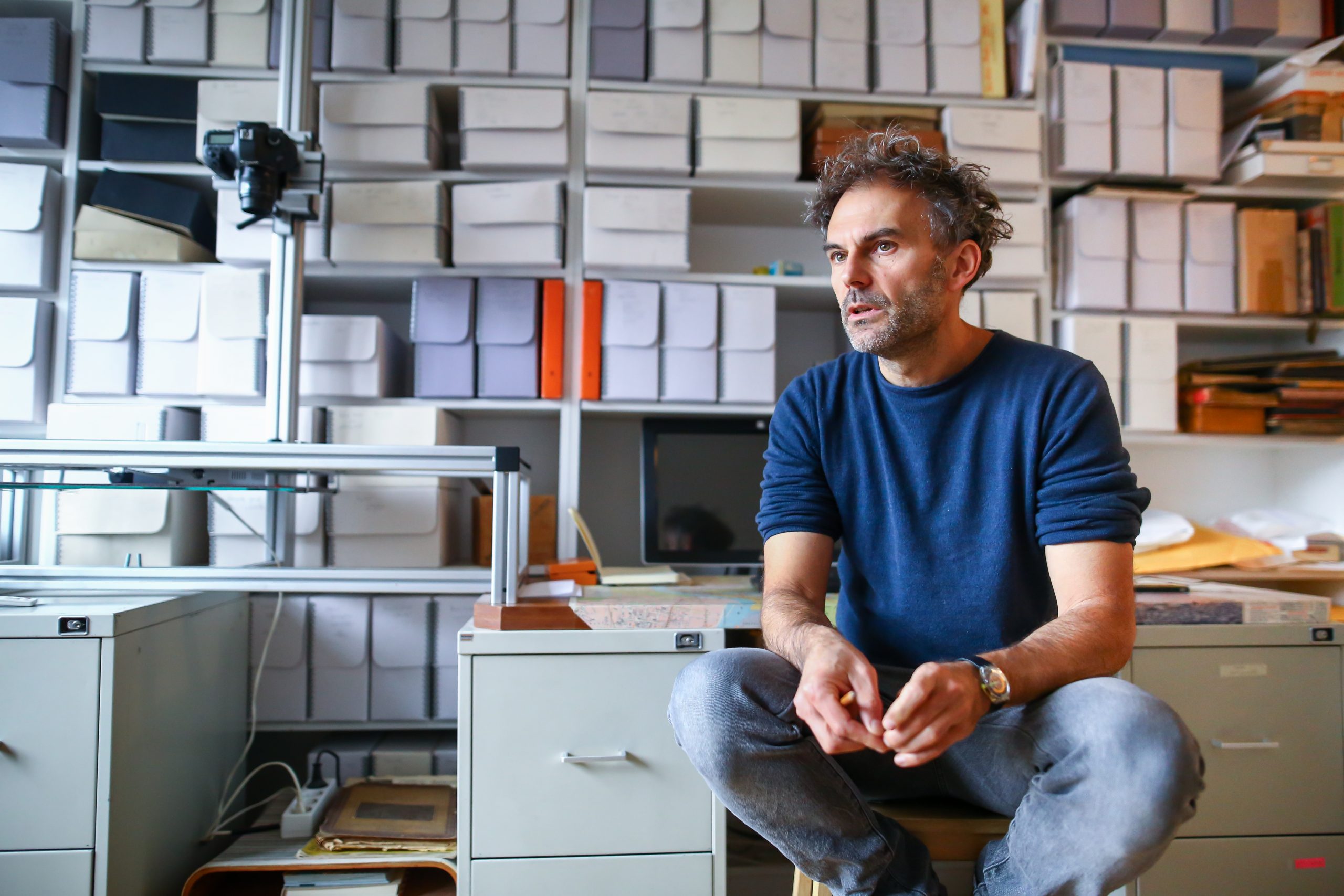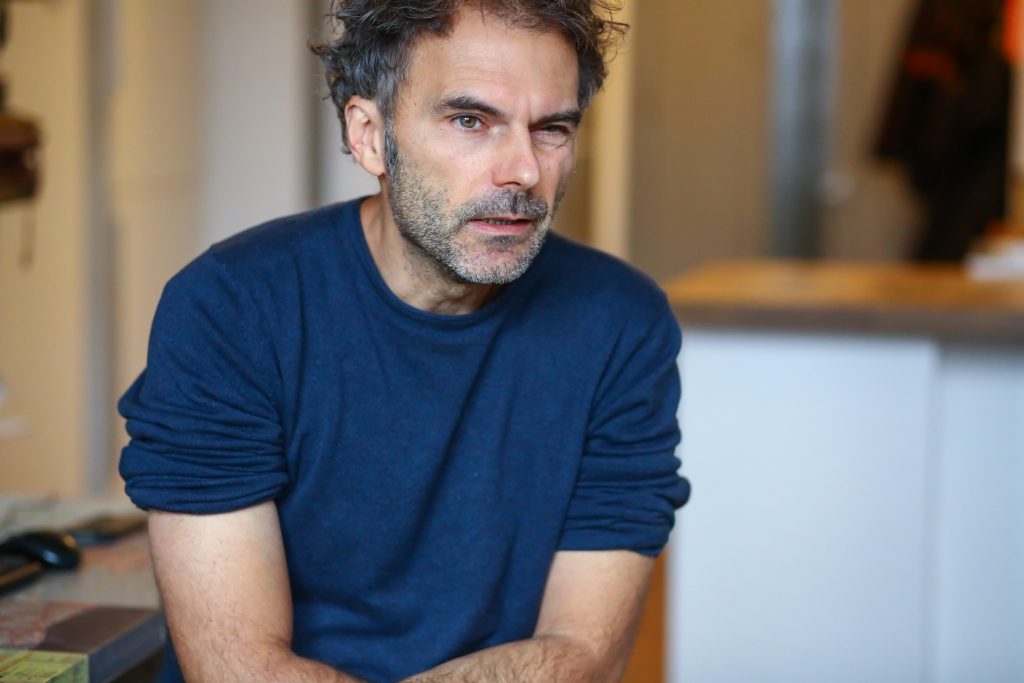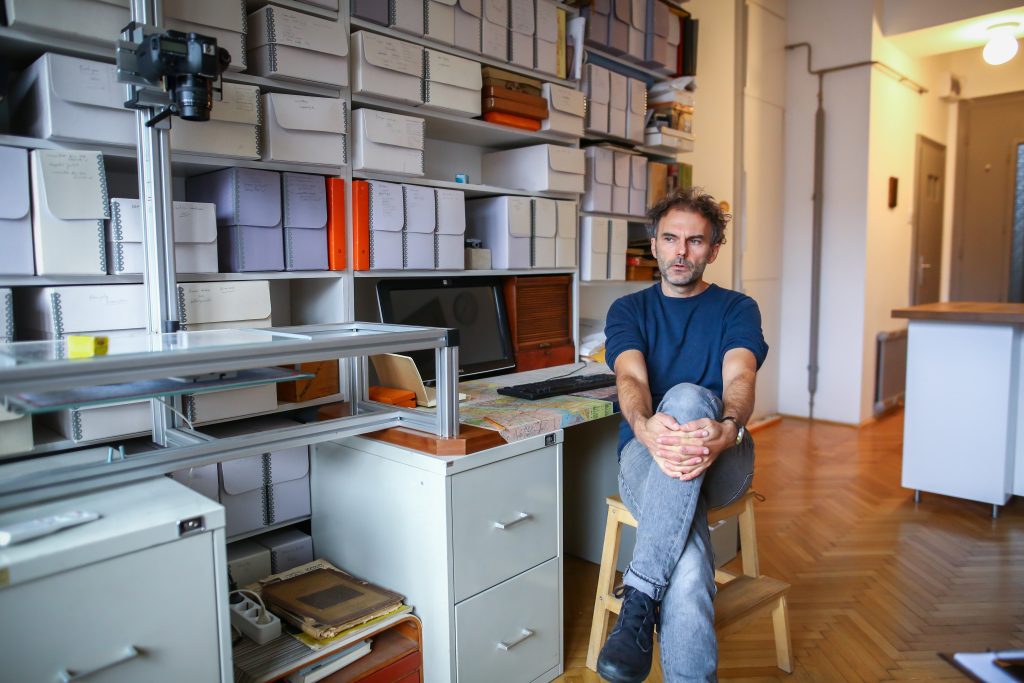“I Hunt for Photos Where the Photographer Captured Their Own World” – Interview with Fortepan Founder Miklós Tamási
Tags: Photography for Beginners, Photo Collection, Photo Archive

Since its 2010 launch, Fortepan has slowly become Hungary’s most popular photo archive.
The creator of the project, Miklós Tamási, launched the photo collection to document
what everyday life was like in Hungary from the end of the 19th century until the
democratic political transition in 1990. Today, there are not many people in Hungary
who have never stumbled upon content from the online archive as dozens of articles
and photo galleries are illustrated with pictures from here each and every day.
– Today Fortepan is the most widely-known and used photo archive in Hungary.
There is almost no newspaper reader or internet user who has not come across
photos from here. What is the key to its success, and how is this archive different from any other?
-For Fortepan to become such a popular and frequently used website, it needed pretty much two things. First, it is a free photo collection, so the images found here are free to download and publish. This is a huge contrast compared to any other photo archive. The other is that it is an assorted collection. Considering the usual practice of museums and archives, it is quite exceptional for someone – in the case of Fortepan, me – to point to a picture and say this photo is important and the other is not. But I do think this is unavoidable in today’s world due to the flood of pictures on the internet. You have to somehow draw people’s attention to the photos that are worth it. Sometimes, of course, you stumble upon pictures that are not particularly exciting, but culturally and historically still important.

Photo: Attila Lambert/Hungary Today
-Is there a period of the 20th century that you always found particularly interesting?
The history of the Hungarian Revolution of 1956 has fascinated me since I was a student. It was a completely unspoken story in the mid-80s, while the revolution affected most of Hungarian society at the time in some way. I deliberately went to people who were part of the revolution to collect photos from them. From the time period of the revolution – today we already know – that thousands of photos have survived. Strangely, we know the least about October 23rd, the day the uprising started, as I guess on that Tuesday, people didn’t go to work with a camera in their hands. But there are darker days of Hungary’s 20th century history, where unfortunately there is no chance that we could come across any pictures.
–For example?
There are many among the horrors of communism. For example, we don’t know of any pictures about the most significant Hungarian labor camp, Recsk. Similarly, the photos capturing the operation of the Hungarian secret service from 1949 to 1989 are incomplete, and we barely have any pictures of the organization. But the most incomprehensible black spot in the 20th century history of Hungarian photography is the Holocaust. While the terror committed against Jewish people affected Hungary’s every village, town, and city, really society as a whole, even the farmlands, in comparison, we have a shockingly small amount of pictures of the ghettoization and deportation of Jews.

Photo: Attila Lambert/Hungary Today
-At the time Fortepan was born in 2010, 5,000 pictures were available; today that number exceeds 134,000. Could you have imagined at the beginning that the collection would grow so large?
The interest in archive photos (for some people the passion) could already be felt at the very beginning. But I would never have imagined that one day I’d be able to stand on my own two feet and get paid for the work I do at Fortepan. Around 10-15,000 pictures are uploaded to the website every year, mostly from family albums and negatives from private individuals. The only format we don’t deal with is the tourist slide strip. Lately, a lot of people have started throwing these out but we don’t have the capacity to process them. Unfortunately, our collection is strongly Budapest-centric, but we are trying to change that. It would be nice to get bequests for processing from other parts of the country or across the border. But it would be at least as important to show the foreign life of Hungarians who were forced to emigrate after 1956.
-The photo archive already set the time limits for the collection right from the beginning. What is the reason that only 20th century images appear on Fortepan? Why were the year limits drawn where they were?
The starting date is 1900, but some
pictures from the end of the 19th century do appear on the site. The
first decades of photography were studio portraits. Due to technical
limitations, someone taking photos on the street rarely ever happened.
Photographers started stepping outside onto the street since the 1890s
but such pictures rarely make it to us. That’s why we chose the year
1900 as the starting point.
The end date of the collection is 1990, the time of Hungary’s political
transition to democracy. This year was the last moment in Hungary that
can be considered historic. Hungary has moved from state socialism to a
civil democracy, which is perfectly reflected in the photos as well. We
talk about not only an aesthetic, material, or political change, but a
change in public life as well.

Photo: Attila Lambert/Hungary Today
-How do the images reflect this?
– Commercial capitalism has also stepped into photography with its brashness, replacing the stifled, seemingly timeless socialism.
– If you look at the photos in chronological order, can you notice any change over the decades? What is the difference between them as we move forward in time?
20th century photography is partly a matter of technical history. From the 1930s with the spread of compact film cameras, photography became easier and cheaper. Amateur photography lived its first revolution during this period. With a lot of people starting to take photos, completely uninteresting images were getting created in large quantities. I hunt for photos where the photographer wanted to capture their own world, not made for order, only for himself. The personal, even dramatic, grotesque, or sociographic photos are the ones that resonate with me.

Photo: Attila Lambert/Hungary Today
-Do the photos of past times have an edge over today’s?
Analog film photography disappeared at the turn of the millennium with digital photography replacing it. Negatives, or photo albums, were objects that were kept as keepsakes by families. Today, we store photos in data format, on the internet, which makes it much easier to lose. I fear that we will have far fewer images of the 21st century. In addition, due to our privacy concerns, the traditional street photo, for example, is disappearing. Unfounded fears have been built into us about the use of photos. We might even reach a point where we will barely be able to show anything about the everyday life of today’s Hungary, only the press photos and the usually artificial images taken for social media. Those who decide to create a “21st Century Fortepan” will have a difficult task ahead. It will not be easy to collect photos about the everyday life of today that are legally appropriate, qualitatively decent, or even interesting, honest pictures.
-What are your future plans?
Our big plan for the next year is to develop a location-specific sightseeing and photography app called ForteGo.
While walking on the street, you can
essentially browse archive photos on your phone taken nearby and use the
app to re-photograph the archive locations. If all goes well, it will
be possible to try ForteGo for the first time in Veszprém in the summer
of 2021. Share this article.
No comments:
Post a Comment
Note: Only a member of this blog may post a comment.